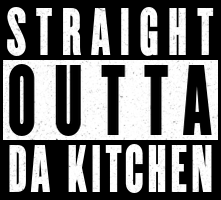
Mastering the Third Shot Drop in Pickleball
Share
The third shot drop is one of the most critical shots in pickleball, often described as a game-changer for players of all levels. Whether you're new to the sport, an intermediate player, or a seasoned pro, understanding and executing the third shot drop can significantly improve your game. This blog post will break down what the third shot drop is, why it's important, and provide strategies for beginners, intermediate, and advanced players.
What is the Third Shot Drop in Pickleball?
In pickleball, the third shot drop refers to the shot played on the third hit in a rally. After the serve (shot 1) and the return of serve (shot 2), the serving team faces their third shot, typically from the baseline or mid-court. The goal of a third shot drop is to hit a soft, controlled shot that lands in the opponent’s non-volley zone (NVZ), also known as the kitchen. This forces your opponents to hit an upward shot, allowing your team to move up to the net, which is the most advantageous position in pickleball.
Why is the Third Shot Drop Important?
The third shot drop is crucial in pickleball because it helps neutralize the advantage of the returning team. After returning serve, your opponents are likely already at the net, where they can hit more aggressive, faster shots. A well-placed third shot drop keeps the ball low, preventing them from attacking. It also buys your team time to transition from the baseline to the net, allowing you to engage in more controlled, tactical dinking battles rather than a fast-paced power game.
Third Shot Drop Strategy for Beginners
For beginners, the focus should be on consistency rather than perfection. It’s common for newer pickleball players to attempt a third shot drop and either hit it too high (allowing the opponent to smash) or into the net. Here are some beginner strategies:
1. Learn Soft Touch: The third shot drop is all about finesse. Start practicing soft, controlled hits that land in the NVZ without trying to be too precise. It’s better to land the ball safely in the kitchen rather than attempting a perfect drop shot that ends up in the net.
2. Use a Forehand When Possible: Beginners should use their forehand for the third shot drop whenever possible because it tends to offer more control and power. This helps build confidence as you learn to control the ball.
3. Practice Patience: Don’t rush to hit the ball. Take your time to aim and hit a soft, controlled shot that arcs gently into the kitchen. You don't need to be perfect—just focus on getting the ball over the net with some consistency.
Third Shot Drop Strategy for Intermediate Pickleball Players
Intermediate players should begin refining their third shot drop, making it more effective and reliable. Here are some strategies:
1. Aim for Specific Spots: Instead of just hitting the ball into the NVZ, start aiming for specific areas, such as the sidelines or just past the net, where it will be harder for your opponents to reach. Vary your placement to keep your opponents guessing.
2. Mix in Third Shot Drives: At the intermediate level, it’s beneficial to mix up your third shot strategy. Occasionally, instead of hitting a drop shot, hit a third shot drive—a faster shot aimed low over the net—to catch your opponents off guard. Mixing drops and drives keeps opponents from anticipating your next move.
3. Improve Your Footwork: Intermediate players should work on moving efficiently toward the net after hitting a third shot drop. You want to be ready to engage in dinking rallies at the kitchen, so practice transitioning forward after executing your shot.
Third Shot Drop Strategy for Advanced Pickleball Players
For advanced players, the third shot drop becomes a finely-tuned tool that can change the course of a match. At this level, precision, spin, and disguise come into play. Here’s how to elevate your third shot drop:
1. Add Spin to Your Drops: Advanced players should experiment with adding backspin or topspin to their third shot drops. This creates unpredictable bounces that make it harder for opponents to return the ball. A ball with backspin may stay low, while topspin can dip down quickly, adding a layer of difficulty for your opponents.
2. Disguise Your Shots: Advanced players should also focus on disguising their third shot drop. Make it hard for your opponents to read whether you’re going to hit a drop or a drive by keeping your swing motion similar for both shots. This keeps them guessing and increases the likelihood of an unforced error on their part.
3. Master Control Under Pressure: In competitive play, there’s often more pressure when executing the third shot drop. Practice hitting drop shots consistently in high-pressure situations so that you can remain calm and execute this shot perfectly during intense rallies.
Conclusion
The third shot drop is an essential shot in pickleball for players at any level. For beginners, the focus is on learning control and consistency. Intermediate players should start working on precision and mixing in alternative shots, while advanced players refine their technique, adding spin, disguise, and control under pressure.
No matter your skill level, mastering the third shot drop will elevate your pickleball game, helping you control the pace of play and transition effectively to the net. Keep practicing, stay patient, and over time, your third shot drop will become one of your strongest assets on the court.
Looking for the best pickleball gear? Check out our Straight Outta Da Kitchen Shop for top-rated apparel and accessories to elevate your game!
